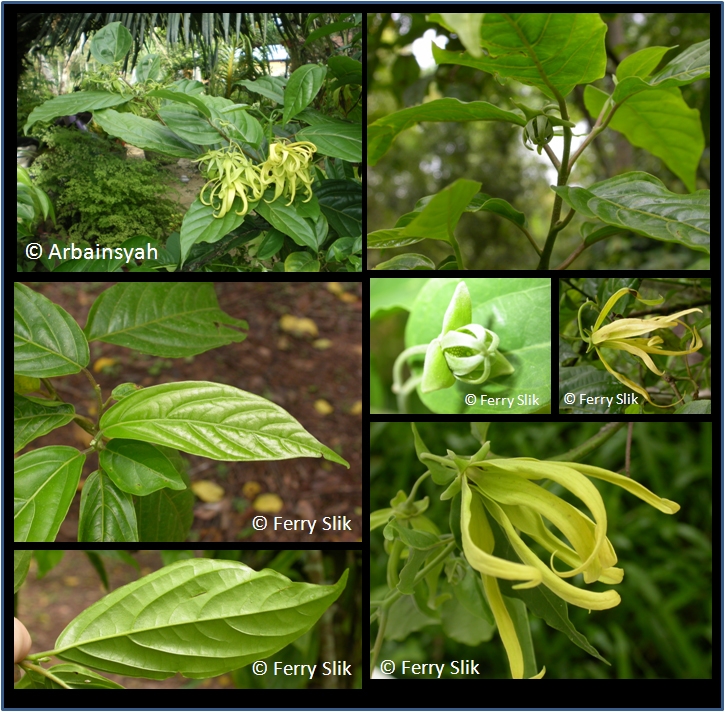Cananga odorata (Lam.) Hook.f. & Thoms., Fl. Ind. 1 (1855)
(Latin for 'fragrant')Synonyms
Cananga mitrastigma (F.Muell.) Domin
Cananga odorata var. velutina (Blume) Koord. & Valeton
Cananga scortechinii King.
Canangium mitrastigma (F.Muell.) Domin
Canangium odoratum Baill.
Canangium odoratum (Lam.) King
Canangium scortechinii King
Fitzgeraldia mitrastigma F.Muell.
Unona fitzgeraldii F.Muell.
Unona leptopetala Dunal
Unona odorata Dunal
Unona odorata (Lam.) Baill.
Uvaria axillaris Roxb.
Uvaria fracta Wall.
Uvaria hortensis Noronha
Uvaria odorata Lam.
Description
Sub-canopy tree up to 27 m tall and 51 cm dbh. Stipules absent. Leaves
alternate, simple, penni-veined, often with conspicuously asymmetrical base.
Flowers ca. 90 mm in diameter, green-yellow, strongly fragrant, placed in
bundles on older branches. Fruitlets ca. 12 mm long, purple-black, placed in an
apocarp, each fruitlet containing several seeds.
Ecology
Usually in secondary forest or disturbed sites (gaps, riversides) in
undisturbed forest. Found up to 500 m altitude. Also common in villages and
gardens where it is cultivated.
Uses
Dwarf forms are cultivated as ornamental plant. The flowers are used to
produce Ylang-ylang oil, which is an ingredient in perfumes. Also used as
medicine against evil spirits.
Distribution
From India to Fiji and Australia.
Local names
Borneo: Bunga gadung; Bunga kananga; Gadong utan; Kananga hutan; Kandanga hutan;
Kenanga; Merua.
